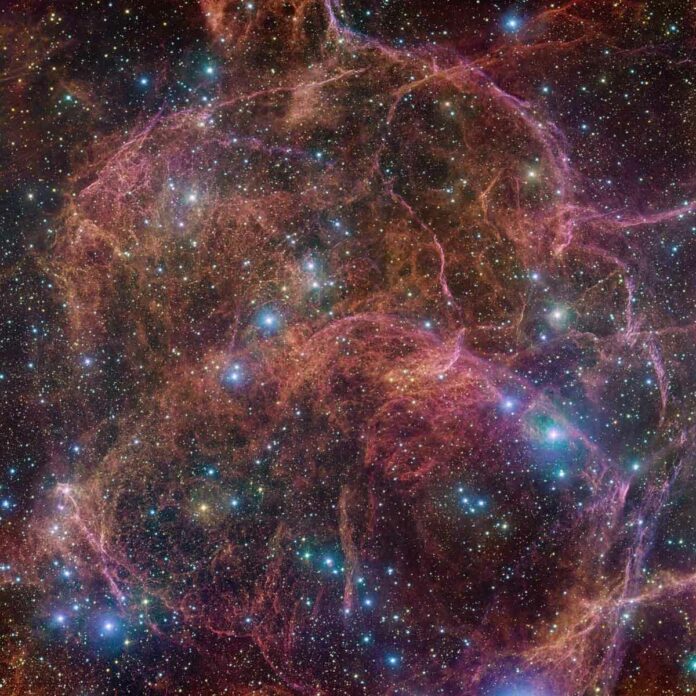As part of Halloween celebrations, NASA, the European Space Agency (ESA), and some space observatories have released eerie, ghostly images of celestial objects. The European Southern Observatory is the most recent to share an unsettling image (ESO). The Very Large Telescope (VLT), which is based at the European Southern Observatory’s Paranal site in Chile, has captured a beautiful tapestry of colors depicting the ‘ghost’ of a massive star. The Vela supernova remnant is made up of these ‘ghostly’ remnants. The image resembles a spooky spider web, as well as magical dragons and ghostly trails.
What the Vela supernova remnant image means
The wispy structures of pink and orange clouds are the only remnants of the massive star. Around 11,000 years ago, a powerful explosion ended the star’s life. When most massive stars reach the end of their lives, they often go out with a bang, in an explosion known as a supernova, and these explosions cause shock waves to travel through the surrounding gas. The surrounding waves are compressed by the shock waves, resulting in intricate thread-like structures. Because the gaseous tendrils have been heated by the energy released by the explosions, they shine brightly.
The VLT image is a 554-million-pixel image that shows an extremely detailed view of the Vela supernova remnant, named after the southern constellation Vela, which means “The Sails.” The entire image can fit nine full Moons, and the entire cloud is even larger. The spectacular supernova remnant is 800 light-years away from Earth, making it one of the closest known to us.
More information on the Vela supernova remnant
When the progenitor star exploded, its layers were ejected into the surrounding gas, resulting in the stunning filaments seen in the image. One of the star’s ghostly remains is an ultra-dense ball. Protons and neutrons are forced together in the ball to form neutrons, forming a neutron star.
According to an ESO statement, the neutron star in the Vela remnant is located slightly outside of the image to the upper left and is a pulsar that spins on its own axis at a rate of more than 10 times per second. Pulsars are rotating neutron stars that emit radiation pulses at very regular intervals.
The Vela supernova remnant was observed several times by the VLT’s wide-field camera OmegaCAM. This observation is a mosaic in the image. OmegaCAM is a 268-million-pixel camera that can capture images using a variety of filters. These allow different colours of light to pass through. This image of the Vela remnant was created using four different filters. The colours used to represent these filters are magenta, blue, green, and red.
The resulting image is an extremely detailed, gorgeous, and stunning view of both the gaseous filaments in the remnant and the bright blue stars in the foreground that add sparkle to the picture.

